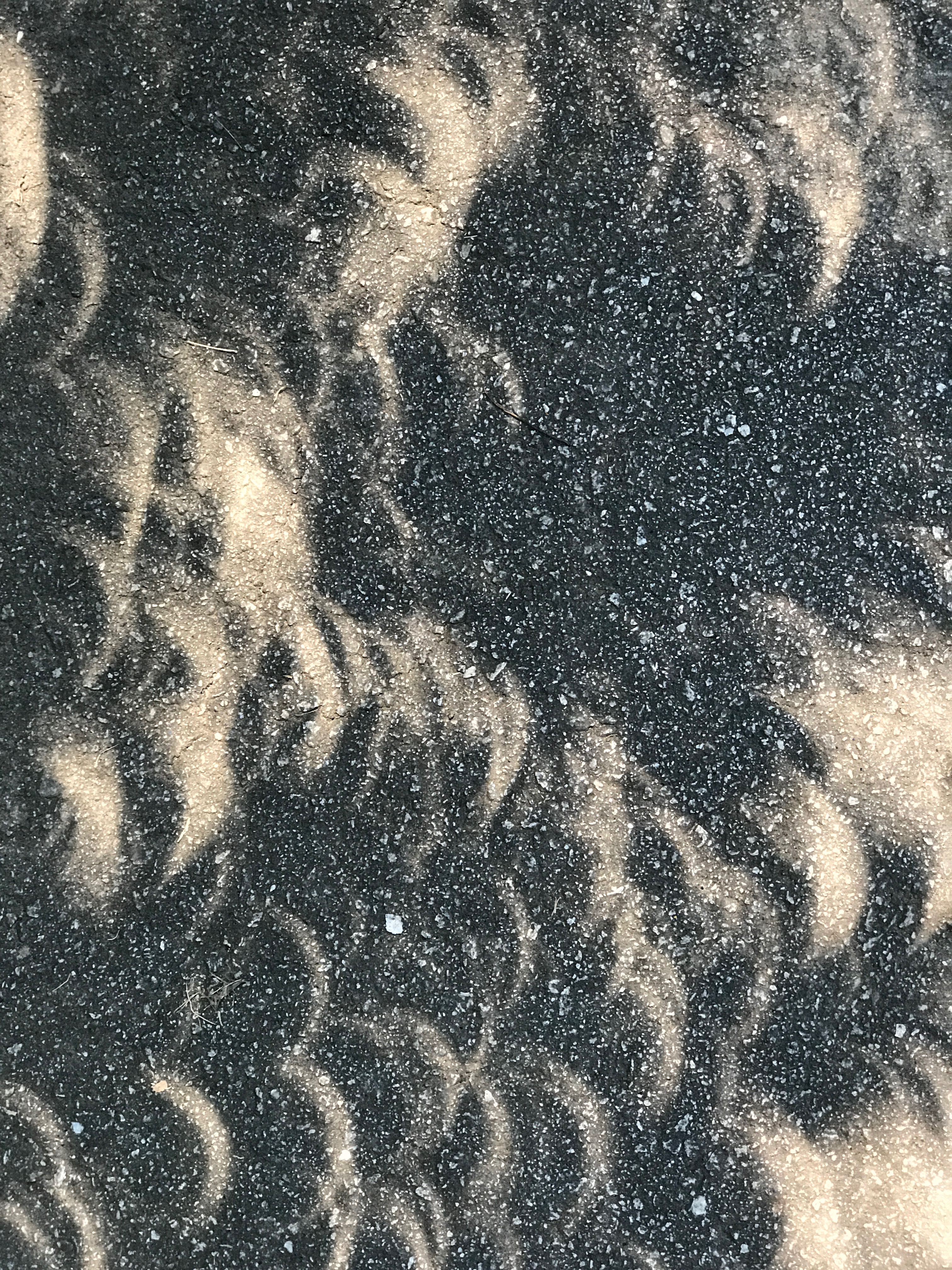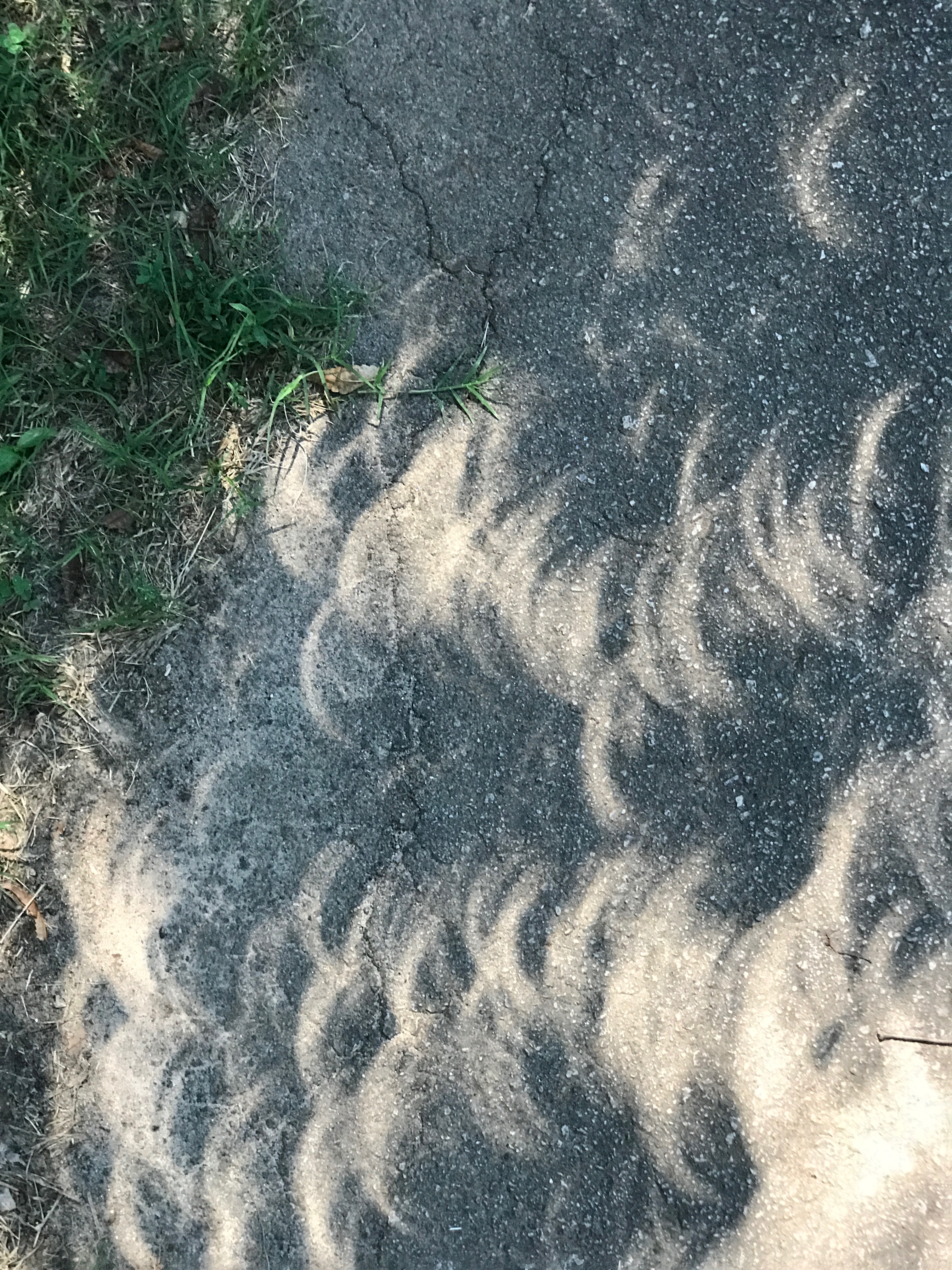Watching this total eclipse was better than losing my virginity.
(My apologies to the lady in question, but this is a technical post and I feel I must be completely accurate. Besides, at 2m 11s, the total eclipse lasted longer.)
I traveled to Greenville SC to see the eclipse. (There will be a separate blog post about the trip.) I was nervous that I might miss it, since weather reports were “iffy” and there were some cumulonimbus clouds drifting by as the eclipse approached totality. Fortunately, at the time of the eclipse the sky was clear.
My host for the trip was M and her boyfriend N. (I’m keeping them anonymous because not everyone in South Carolina wants to be associated with us hippy-dippy Wiccan types.) We watched the eclipse in Greenville’s Cleveland Park. It’s a small park but very pleasant, with workout stations, a zoo, and bicycle rentals. We set up a picnic at about 10AM, and relaxed, munched, and socialized until the eclipse at 2:38PM.
Our observing tools were some eclipse glasses I’d purchased a couple of months prior:

I also brought two binoculars: one regular, and one coated for solar observing. It was a bit of pain to travel with them, but I’m very glad I did; they greatly enhanced the experience. I knew how to work with binoculars, and I went over the procedure with M and N; totality would only be for a couple of minutes and you don’t want to be fiddling with focusing knobs in the middle of it.
Another observing tool was the app Solar Eclipse Timer. It computed the exact times associated with the eclipse (first contact, start and end of totality, last contact) based on the exact GPS coordinates of where we were. It counted down to each time and gave warnings (“Glasses on!”) so we were aware of each transition.
I did not try to take pictures of the eclipse. I knew I would not be able to do it with equipment I could pack in a single suitcase, and I also knew that I did not have the experience needed to take pictures of this sort. Also, I wanted to enjoy the eclipse, and not get bogged down in technical details. There are plenty of professionals out there who took pictures of the eclipse, so the only people I disappointed are those relatives who don’t understand astrophotography.
I did take pictures of the eclipse images taken by the “pinhole cameras” formed by the tree leaves:

Getting a bit ahead of the story, here’s the a picture taken after totality. Note that the crescents are now pointed in the opposite direction:

After totality, I saw people making “pinhole cameras” with their hands. Here’s my attempt:

If you’re thinking “The crescent shape in the middle of Bill’s fist is coming from the way he’s holding his fingers” I could show you a series of pictures I took as I rotated my fist; the crescent image does not rotate with my hand.
About five minutes before totality, the ambient light became noticeably dimmer. The street lights turned on. It began to feel more like dusk even with the sun high in the sky. The temperature, which had hovered in the 90s, dropped several degrees; it felt cool and comfortable. After totality, it took just a few minutes for the temperature to get hot enough that we started sweating again. It was a practical lesson on how the heat energy from the sun affects conditions from moment to moment.
My notes on totality:
– I saw no shadow bands either before or after the eclipse. Other observers saw them, so shadow bands must be a function of local conditions:
– In the seconds before totality, I watched through the solar binoculars for Bailey’s Beads and the Diamond Ring. I did not see them. It was just a thinning crescent until totality.
– Just after totality, I saw a “gap” in the thin crescent that might have been a single lunar mountain peak at the edge creating a single “bead”. Or it might have been an Earth-based atmospheric effect.
– We were in a park with lots of birds and a zoo nearby. During the eclipse there was no evident increase in bird sounds, nor any special reaction I could hear from animals in the zoo. The crickets seemed to chirp more loudly, but this might have been my own reaction to the experience.
– During totality I could see Venus, and through the binoculars I could see Regulus right next to the sun. In theory I should have been able to see Jupiter, but it would have been behind the trees lining the field. No sign of Mars or Mercury or any stars visible to the naked eye (even the Sun was blocked!).
– The horizon was blocked by the park’s trees, so I couldn’t see the effect of “moon shadow.”
– I did not see any prominences during the eclipse, though I did see the sunspots on the Sun through the solar binoculars before the eclipse.
Most of the points above are framed in the negative. Remember, I’m a scientist, and a negative observation is still an observation.
As for the eclipse itself:
No pictures, no words, can convey seeing what it was like. The image of the corona blazing in the sky is beyond description. I was profoundly moved. I was “high” for hours afterward. I recall that high typing these words now.
I now know why dedicated eclipse watchers travel to remote corners of the world, even Antarctica, to experience a total eclipse that lasts less than a minute. There’s simply nothing like it. It’s a union of vision and mind and planning and spirit.
It’s why I became a scientist.
Pingback: Eclipse trip – 2017 – The Argothald Journal